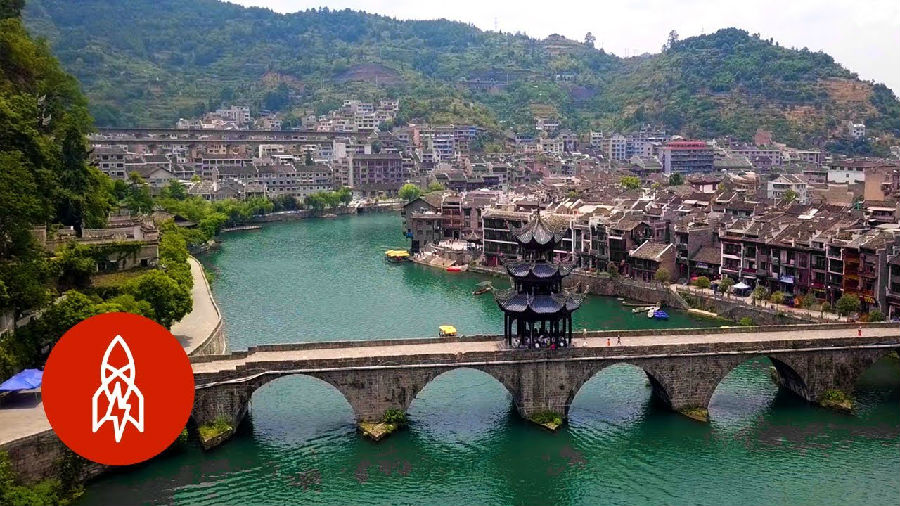Over 2,000 years ago, the city of Zhenyuan was built on a natural moat. Sandwiched between mountains, intending to keep intruders out.
兩千多年前,鎮(zhèn)遠(yuǎn)市從一道天然的護(hù)城河上拔地而起。 為了御敵,人們選擇了這個(gè)四面環(huán)山的地界。
But today, tourists flow through the streets of the famous Venice of the Orient.
如今,這座東方威尼斯的街道上已是游客遍地。
Built in 205 BC during the Qin Dynasty, the Wuyang River divides the city into two parts: East and West.
舞陽河,建于公元前205年的秦朝,將鎮(zhèn)遠(yuǎn)一分為二,東西鎮(zhèn)遠(yuǎn)隔河相望。
Numerous small canals, rivers and bridges dot the landscape of this ancient city.
運(yùn)河,河流,各色拱橋遍布這座古城的各個(gè)角落。
The city also thrived from trade.
貿(mào)易也曾是這座城市的命脈之一。

The Silk Road of the South went through this city because it was the only access point by ship from South China to the central plains.
南絲綢之路就從此地經(jīng)過,因?yàn)殒?zhèn)遠(yuǎn)是從中國南部進(jìn)入中原地區(qū)的唯一關(guān)口。
Merchant ships were docked here from Vietnam, Thailand and India, eager to move through the port to the capital.
從越南,泰國和印度前來的商船就曾停靠在這里,等待著通過港口前往京師。
Today, you will find remnants of old and new married perfectly in this ancient city.
今天,這座城市還保留著新舊傳統(tǒng)在這座古老的城市完美融合的見證。
As day turns to night, the stunning views turn into a neon wonderland.
夜幕降臨,白天的秀美景色逐漸蛻入璀璨的霓虹之境。












